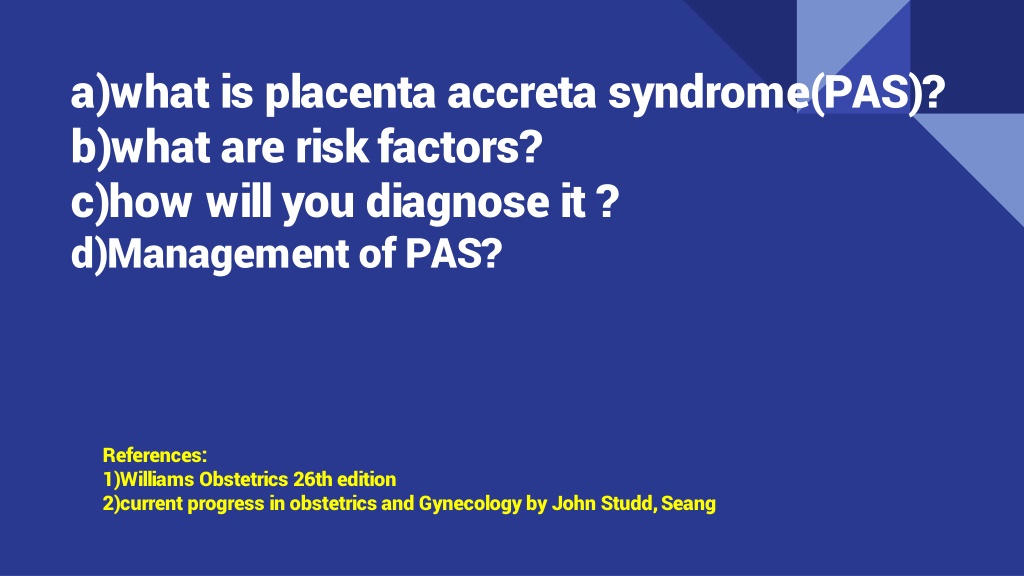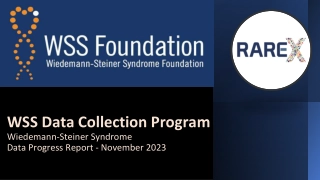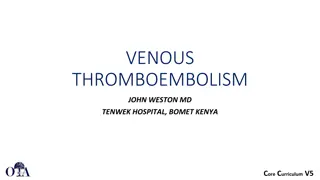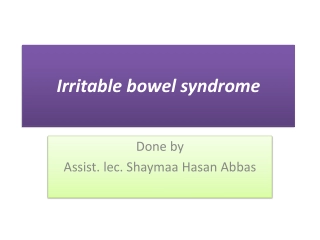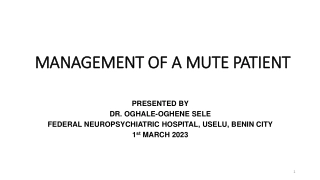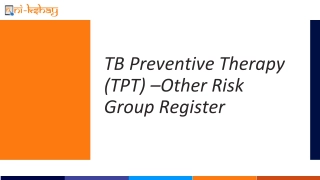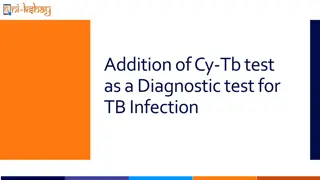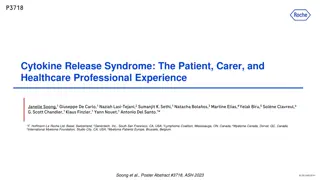Placenta Accreta Syndrome: Definition, Risk Factors, Diagnosis, and Management
Placenta Accreta Syndrome (PAS) is characterized by abnormal placental implantation with firm adherence to the uterine muscle due to the absence of certain layers. Risk factors include previous cesarean section, placenta previa, advanced maternal age, and uterine anomalies. Diagnosis involves ultrasound imaging and color Doppler studies. Management typically involves a multidisciplinary approach, including monitoring and surgical intervention when necessary.
Download Presentation
Please find below an Image/Link to download the presentation.
The content on the website is provided AS IS for your information and personal use only. It may not be sold, licensed, or shared on other websites without obtaining consent from the author. Download presentation by click this link. If you encounter any issues during the download, it is possible that the publisher has removed the file from their server.
Presentation Transcript
a)what is placenta accreta syndrome(PAS)? b)what are risk factors? c)how will you diagnose it ? d)Management of PAS? References: 1)Williams Obstetrics 26th edition 2)current progress in obstetrics and Gynecology by John Studd, Seang
DEFINITION ACCRETE SYNDROMES INCLUDE ANY PLACENTAL IMPLANTATION WITH ABNORMALLY FIRM ADHERENCE TO MYOMETRIUM BECAUSE OF PARTIAL OR TOTAL ABSENCE OF THE DECIDUA BASALIS AND IMPERFECT DEVELOPMENT OF NITABUCH LAYER.
RISK FACTORS- 1.Previous cesarean section 2.Placenta previa 3.Advanced maternal age 4.Multiparity 5.Previous myomectomy 6.Uterine curettage +/-Asherman syndrome 7.Submucous leiomyoma 8.Uterine anomalies 9.Smoking 10.Prior pelvic irradiation
Incidence -1 in 533 deliveries. Placenta previa has risk of accreta in 3%,11%,40% for 1st,2nd and 3rd repeat C- section respectively. Placenta previa without uterine surgery has 1-5% risk of accreta.
Clinical presentation- In 1stand 2ndtrimester usually present with hemorrhage as a consequence of coexisting placenta praevia Accreta may not be identified in whom it is not associated with praevia. Antenatally presence of risk factors should raise the suspicion. 1sttrimester USG-with gestational sac in LUS ,irregular vascular spaces in placental bed, caesarean section scar implantation should be followedup. Intra-operative-difficult/failed attempts at manual placental removal Immediate postpartum-heavy bleeding from implantation site
USG- In 2nd ,3rd trimester- 1) loss of hypoechoic placental myometrial differentiation (retroplacental clear space) 2)Irregular shaped placenta lacunae(vascular spaces) within placenta -giving moth eaten /swiss cheese appearance 3) Thinning of myometrium (<1mm) 4)Protrusion of placenta into urinary bladder
COLOUR DOPPLER- 1)Diffuse of focal turbulent lacunar flow 2)Vascular lakes with turbulent flow 3)Hypervascularity of serosa-urinary bladder interface 4)Blood vessels or placental tissue bridging uterine-placental margin, myometrial bladder interface or crossing uterine serosa.
3D POWER DOPPLER- 1)Hypervascularity 2)Numerous coherent vessels involving whole uterine serosa-bladder junction 3)Inseparable cotyledonal and intervillous circulations, chaotic branching,detour vessels
MRI-T2 weighted images- 1)Uterine bulging 2)Heterogeneous signal intensity 3)Dark intra-placental beds 4)Tenting of bladder 5)Direct visualisation of invasion of adjacent organs 6)Loss of myometrial trilaminate structures
BIOCHEMICAL MARKERS- Raised MSAFP has association >2.5mom -eight fold increased risk of association Raised bhcg >2.5mom has four fold increased risk of association Raised Maternal serum Creatinine Kinase associated with increta and percreta
MANAGEMENT- *Confirm diagnosis *To be shifted to a tertiary care hospital with all facilities *Plan and counsel the patient regarding need for blood ,blood products, *Assemble Multi-disciplinary team *Preoperative investigations-blood group, blood tests, cross-match,coagulation profile *Timing of Surgery -after 34 weeks -ideally around 36weeks
PRE AND OPERATIVE SPECIFICS- *Balloon catheterization of -Uterine or Internal Iliac artery *Cystoscopy-with ureteric stenting avoids ureteral injury in cases with increta *Pre-op USG mapping of placenta *Anaesthesia-General anaesthesia better *Skin Incision-midline vertical incision better to have better exposure *Uterine incision-Classical / Upper transverse incision avoiding placenta
SURGERY- Planned preterm Cesarean hysterectomy-better Individualised decision has to be made-based on- 1.desire for future fertility 2.Hemodynamic stability 3.Extent of invasion 4.Availability of resources
SURGICAL OPTIONS- 1)Radical cesarean hysterectomy-reduction of maternal mortality to <2% 2)Uterine Sparing -extirpative method, local resection , conservative method a)Extirpative method-forceful removal of placenta b)Local resection (3P s)-preop mapping of placenta, pelvic devascularisation, placenta non removal with excision along the myometrial attachment. Hemostatic measures uterine or internal iliac artery ligation, embolization,compression square sutures, B-lynch sutures is needed .
Conservative method- umbilical cord is cut near placental surface(2-3cm) and left in situ Done in patients -who desire future fertility -In extremely unresectable percreta -situations of undiagnosed accreta without proper resources Prerequisites- hemodynamic stability -Normal coagulation status -Patient awareness and acceptance of risks
CONSERVATIVE- Post-op - Wait for spontaneous resorption -Prophylactic antibiotics -Uterotonics +/-Adjuvant-Methotrexate 1 mg/kg on alternate days for 4-6days (controversial) Followup -for 1-12months with USG,bhcg has to be done -look for signs of sepsis ,hemorrhage,DIC.
